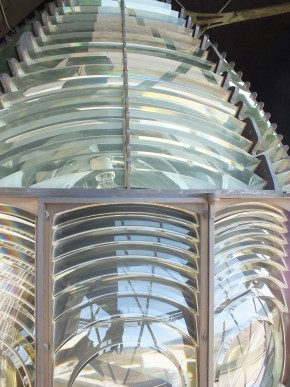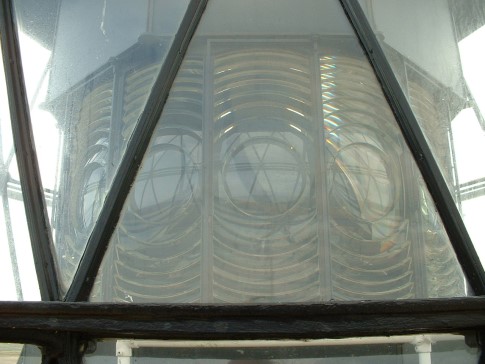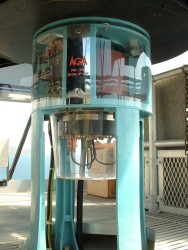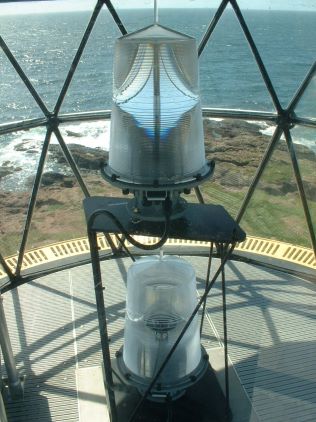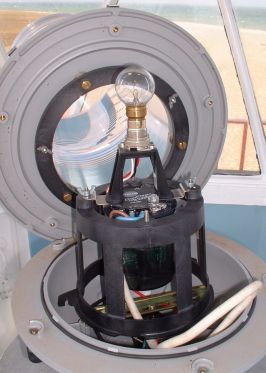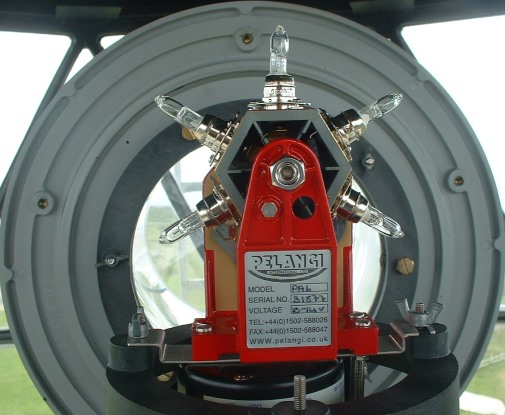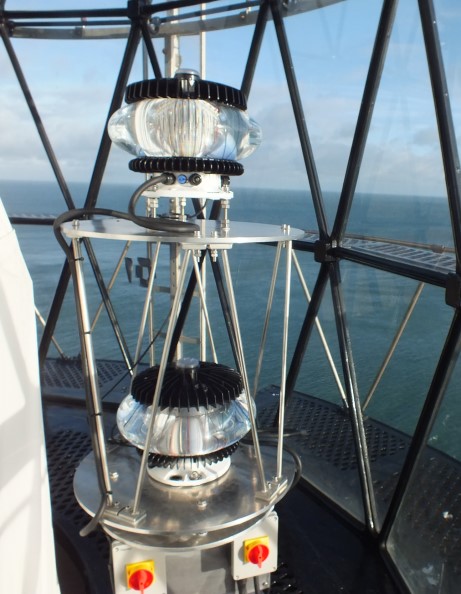Maughold Head lighthouse
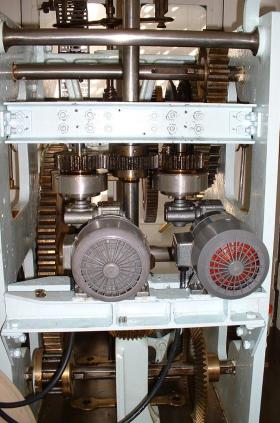 Electric motors driving final gearshaft via automatic clutch |
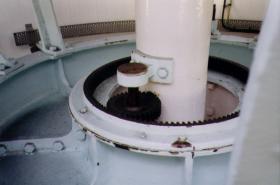 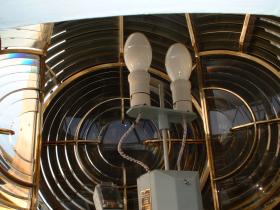 250 Watt multi-vapour lamps + lampchanger
250 Watt multi-vapour lamps + lampchanger |
Before automation when the light was put out in the morning the curtains were drawn to stop the sun shining back through the lens,after automation there was nobody to draw the curtains so the lens now revolves continually.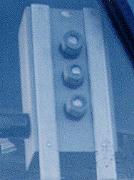 At dusk the photo-electric cells(Takes two out of three to agree)informs the Programmable Logic Controller (PLC) to "Light-up". At dusk the photo-electric cells(Takes two out of three to agree)informs the Programmable Logic Controller (PLC) to "Light-up".240 V.ac supplies the battery chargers,the batteries then supply 24 V dc.to the invertor(changes 24 V.dc.to 240 V.ac.)which then powers the Optic system. If power were to fail the Multi-Vapour Lamp takes about ten minutes to cool down and relight,as the invertors are supplied from the batteries,mains supply failure is immaterial. | |
| |
 |
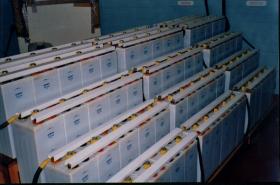 |
| . The optic control cubiclce gives the attendant/technicians an indication of which power supply and motor is in use,whether the lens is running fast or slow,whether the lampchanger has operated,optic voltage and current etc. Otherwise a laptop computer with apropriate program is required to interrogate the controller. | |
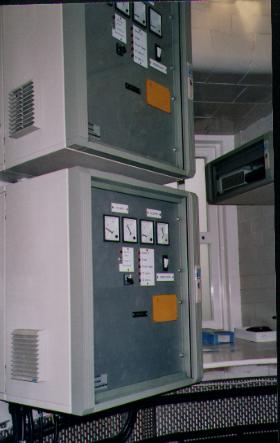 |
 . . |
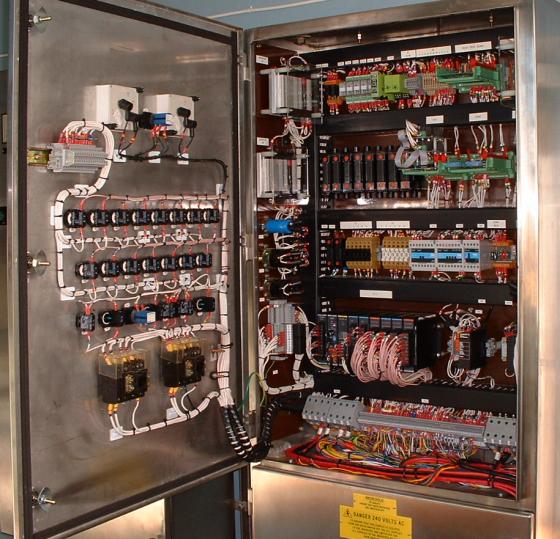 An internal view of Optic Control Cubicle. What it took to replace the Lightkeeper? | |
 Emergency Light Orga 250mm lantern
Emergency Light Orga 250mm lanternType FML 302 SA |
Any time the main optic is off, the emergency light is selected,which operates with its own photo-electric cell. Light source 60 watt bi-filament lamp. Part of the attendants duties is to check operation of the emergency light and that it is still using the No.1 filament. Technicians visit at least annually to check,modify and update equipment as required. |
|
Point of Ayre Lighthouse
Main differences a 400 watt lamp instead of 250 watt. Eventually three phase motors instead of single phase. Gave a more gradual power take up and saved wear on gearbox clutches
Character change
The red shades were removed from the bullseye lens, eight lens were blanked off to give four clear-four blank etc and the rotation set at a revolution every 40 seconds giving the character FL(4)20 sec. Faster flash was required due to ships moving faster? | |
|
Douglas Head Lighthouse
The metal panels in front of the lamps are called collimators,whose purpose is to give a sharper more defined flash.
Two double banked units of 12 lamps mounted facing in opposite directions,turned by an AGA PRB21 Gearless Drive Unit rotating at 3 rpm,gives a flash every 10 seconds. Only 8 of the lamps (30 Volt 200 Watt) run at 25 Volt 150 Watts to give increased service life are used in normal operation 4 in each bank are 6 Volt 28.5 Watts used as emergency lamps (Loss of mains electric power or complete failure of main lamp banks) Corresponding lamps (4) in each bank are connected in series,if one lamp fails all four go out,which gives each unit the same intensity,similarly with the 6 volt lamps,two connected in series.Power provided by emergency batteries. Emergency light is a 250 mm Lantern mounted on the balcony rail.
Operation of the optic system is monitored by NLB's Monitoring center. | |
|
Operating current is monitored,which lets the monitoring center know when the lamps are on. Various battery charging voltage and current readings also available to monitoring center.
New style lanterns 2018 Douglas Head
Sealite Lanterns Type SL-300-1D5-2 All Lanterns flash in normal operation Maughold Head
Sealite Lanterns Type SL-300-1D5-1
| |
All photographs Copyright Fred Fox

